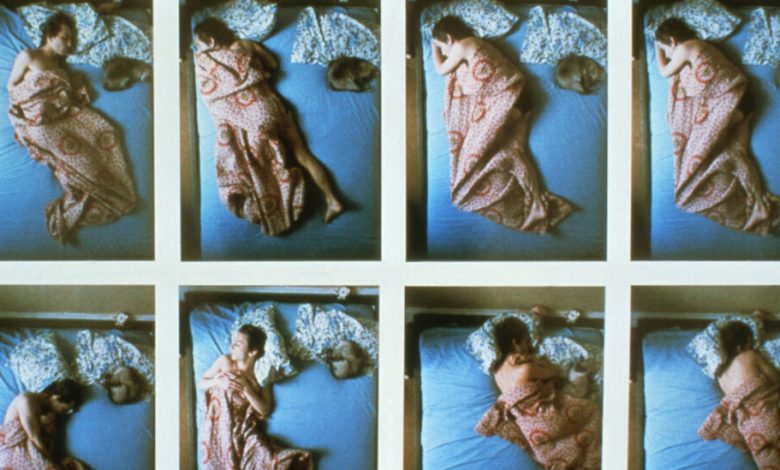The Most Important Eight Hours of Your Day? They Weren’t Always.

MAPPING THE DARKNESS: The Visionary Scientists Who Unlocked the Mysteries of Sleep, by Kenneth Miller
In 1979, the surgeon general, Julius Richmond, launched Project Sleep, a research and educational initiative to increase the understanding of insomnia and other sleep disorders, and to further their treatment. Tremendous excitement ensued within a sleep science community that had been working largely unrecognized and underfunded for decades. Project Sleep could, at last, turn decades of arcane study into policy. Actual change. Praise be!
A year later, the incoming Reagan administration pulled the plug on its funding, and Project Sleep was over. Sleep scientists went back to their labs, divested a few more cats of a cerebral cortex in the name of research, and carried on working, once more, in obscurity.
Such is the lot of this stumbling, star-crossed, ridiculed, irrepressible branch of science. “Mapping the Darkness” is a propulsive, utterly engrossing history of the subject, seen through the prism of four of its prominent contributors. Kenneth Miller traces the work of Nathaniel Kleitman, Eugene Aserinsky, William Dement and Mary Carskadon; the last, still living, provided “many hours of interviews” for the book.
Miller’s broadness of vision and baffled wonder at this great “invisible continent” of sleep, and the work undertaken to navigate it, may spring from the fact that he is a writer, editor and journalist rather than a sleep specialist, and approaches the subject with a beginner’s — or at least outsider’s — eye.
At the same time, Miller’s narration of the subject is commanding, bright and deft. His prose cuts and flows through the last century of impossibly complex stop-start progress in the measuring and quantifying of sleep — why we do it, and how. None of it is simple and all of it is captivating.
Scientific progress often arises from a meeting of determination and happenstance. This has been especially true of sleep science, a field that struggled, for most of the 20th century, to be taken seriously, and so frequently attracted people with perverse resolve and maverick brilliance.
Brain waves, the basis of all sleep science, were first recorded in the 1920s by Hans Berger, a German who had started out looking for a locus in the brain for “psychic energy” that might explain his sister’s telepathy. He called these recorded brain waves EEGs — electroencephalograms. By capturing sleeping brain states, EEGs moved the discipline from esoteric to mainstream — from Freudian hypothesizing about dreams to the birth of neuroscience.
Kleitman, the great pioneer and patriarch of the subject as we know it, went into sleep research after escaping first Russia and then Lebanon (where, as a Russian in World War I, he became a prisoner of war) and ended up, by guile, chance, tenacity and a few forged documents, in the United States. His aspirations to become a medical doctor were so thwarted by antisemitic prejudice that he had to settle for an arm of science that barely yet existed and in which nobody was interested: sleep.
His student, Aserinsky, who discovered the phenomenon of rapid eye movement, or REM, did so by looking, for want of something better to do, at eyelid movement in sleeping subjects. Aserinsky’s assistant, Dement, intended to be a psychiatrist but realized, while in one of Kleitman’s lectures, that in order to know about the waking brain, one needed to study sleep. As he put it, “During that lecture it occurred to me that the way to understand consciousness is to understand what must be given up to enter unconsciousness.”
Then there’s Carskadon, who drove policy changes around school start times to better suit the sleep needs of teenagers. The only prominent woman in a history that is depressingly, overwhelmingly male, Carskadon was left-field: a cousin of Dement’s wife who ambled, with no formal qualifications, into a long and fruitful career in sleep research.
Miller is superb at identifying and then interweaving the multiple confluences of this sprawling subject. There are interesting discussions of sleep disorders and of the impact of impaired sleep on society. But the most fascinating of the book’s threads is that of REM sleep — le sommeil paradoxal, as it has been called. First there was the link, discovered by Aserinsky, Dement and Kleitman, between REM and dreams, and then the subsequent decades of research into what this state is, where in the brain it happens, when it happens and its purpose.
I found myself studding the margins with exclamation marks, as Miller carries the reader through these dark mysteries, leading us to points of light that serve only to illuminate more mystery. We learn that REM sleep is what the French researcher Michel Jouvet called a “third state of the brain, as different from sleep as sleep is from wakefulness.” If deprived of it, we experience a “REM rebound” as soon as we sleep again — we plunge more quickly into the REM phase and stay there longer, to compensate. In Miller’s hands, sleep is a territory of seductive, wondrous mystery, and his great achievement is balancing rigor and awe.
“One of the paradoxes of sleep science (and, perhaps, most other sciences),” Miller writes, “is that it often violates the precepts of Occam’s razor — the principle that between two competing theories, the simpler explanation is to be preferred.” We’ve long known that there is nothing simple about sleep; Miller introduces us to its farthest reaches. Our growing understanding of this stubborn, beautiful enigma will inform our waking consciousness, too.
Samantha Harvey is the author of “The Shapeless Unease: A Year of Not Sleeping.”
MAPPING THE DARKNESS: The Visionary Scientists Who Unlocked the Mysteries of Sleep | By Kenneth Miller | Illustrated | 414 pp. | Hachette | $32.50



